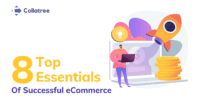Strategies for Effective Website Content Organization
If you’re looking to improve the user experience of your website, effective content organization is a must. With so much information available on the internet, users want to be able to quickly find what they’re looking for without having to sift through cluttered pages or confusing navigation systems.
By implementing strategies for effective website content organization, you can better meet the needs of your audience and achieve your website’s purpose and goals.
To begin, it’s essential to understand your audience and their needs. What are they looking for when they come to your website? What questions do they have? By answering these questions, you can create content that is tailored to their interests and needs.
From there, defining your website’s purpose and goals will help guide your content organization strategy. Whether you’re aiming to increase sales, provide information, or build a community, your content should be organized in a way that supports these goals.
Key Takeaways
- Understanding audience needs and tailoring content accordingly is essential for effective content organization
- Clear and consistent navigation, including categories and subcategories, is crucial for easy access to information
- Visual hierarchy, including headings and bullet points, guides the eye and emphasizes important information
- Testing and refining website organization through user surveys, A/B testing, and user testing sessions can help identify areas for improvement and optimize the user experience.
Understanding Your Audience and Their Needs
Understanding your audience’s needs is key to creating content that resonates with them and drives engagement on your website. Without knowing who your target audience is, you won’t be able to craft content that speaks to them.
So, start by identifying your target audience and their needs. To do this, you need to conduct research and gather data on your audience’s demographics, preferences, and behavior. You can use tools like Google Analytics and social media insights to gain valuable insights into your audience’s behavior and interests.
Once you have a clear understanding of your audience, you can tailor your content to their needs and preferences, which will help you create content that resonates with them and drives engagement on your website. Remember, the key to effective content organization is to put your audience’s needs first.
Defining Your Website’s Purpose and Goals
To truly establish a cohesive and purposeful website, you must clearly define the goals and objectives that will guide your content creation and design decisions. This involves understanding what your website aims to achieve and what actions you want your visitors to take.
Here are four steps to help you define your website’s purpose and goals:
-
Identify your target audience and their specific needs and interests. This will help you tailor your content and design to meet their expectations.
-
Determine the primary message you want to convey through your website. This could be promoting a product or service, providing information, or building brand awareness.
-
Set measurable goals that align with your website’s purpose and message. Examples could include increasing website traffic, generating leads, or improving user engagement.
-
Establish key performance indicators (KPIs) to track your website’s progress towards achieving these goals. This will allow you to adjust your strategy and content as needed to optimize your results.
By defining your website’s purpose and goals upfront, you can create a more effective and engaging online presence that resonates with your target audience and drives meaningful results.
Creating a Clear and Consistent Navigation System
Creating a clear and consistent navigation system is crucial for visitors to easily find what they need and feel confident in exploring your site. Your navigation system should be intuitive and user-friendly, with a logical hierarchy that guides visitors through your website.
A good navigation system should also provide easy access to your most important pages, allowing visitors to quickly find the information they need. To create a clear and consistent navigation system, start by organizing your website’s content into categories and subcategories.
Use descriptive labels for your navigation links, and make sure they accurately reflect the content of the pages they lead to. Consider using drop-down menus or fly-out menus to display additional subcategories, but be careful not to overwhelm visitors with too many options.
Finally, test your navigation system to ensure that it works well on different devices and browsers, and make any necessary adjustments to improve its usability. With a clear and consistent navigation system, you can help visitors easily find what they need and improve their overall experience on your website.
Using Categories and Subcategories to Organize Content
When organizing your website’s content, you can make it easier for visitors to navigate by using categories and subcategories that guide them to the information they need. Categories and subcategories are like a map that guides users to their destination. They help your visitors find what they are looking for quickly and easily.
To create categories and subcategories, you need to first organize your content into groups based on a common theme. For example, if you have a blog about cooking, you might have categories such as "recipes,""cooking techniques,"and "kitchen tools."Within each of these categories, you could create subcategories, such as "desserts,""vegetarian recipes,""grilling techniques,"and "bakeware."Using a table like the one below can make it easier for you to create categories and subcategories and for your visitors to understand how your content is organized.
| Category | Subcategory 1 | Subcategory 2 | Subcategory 3 |
|---|---|---|---|
| Blog | News | Tips | Tricks |
| Recipes | Desserts | Vegetarian | Gluten-free |
| Cooking Techniques | Grilling | Baking | Sautéing |
| Kitchen Tools | Knives | Pans | Utensils |
By using categories and subcategories to organize your website’s content, you can help your visitors find what they are looking for quickly and easily. This will not only improve their user experience but also increase the likelihood that they will return to your website in the future.
Incorporating Search Functionality for Easy Access to Information
You can make it effortless for your audience to access information on your website by incorporating a search function that allows them to quickly find specific content they need. This is particularly useful for websites with a lot of content, as it can become overwhelming for users to navigate through pages and categories to find what they’re looking for.
When incorporating search functionality, it’s important to make sure that the search bar is prominently displayed on your website and easy to use. It should be easy to find and accessible from any page on your website.
Additionally, you should ensure that the search algorithm is accurate and returns relevant results. By doing so, you can provide your audience with a convenient and effective way to find the information they need. This can improve their overall experience on your website.
Using Visual Hierarchy to Highlight Important Information
One way to grab your audience’s attention and emphasize important information is by using visual hierarchy. This technique involves arranging the content on your website in a way that guides the eye towards the most important information first.
By doing this, you can make sure that your visitors are immediately drawn to the key messages you want to convey. To create a visual hierarchy, you can use different design elements such as font size, color, and contrast.
For example, you can use a larger font size and a brighter color for your headings to make them stand out from the rest of the text. You can also use whitespace to separate different sections of your content and create a sense of visual order.
By using visual hierarchy, you can not only make your website more attractive and engaging but also help your visitors find the information they need quickly and easily.
Streamlining Content to Avoid Clutter and Confusion
Streamlining content can prevent clutter and confusion, making it easier for visitors to navigate and find the information they need on your site. When organizing your website content, it’s important to remember that less is often more. Too much information can overwhelm visitors, causing them to leave your site without finding what they need. By streamlining your content and focusing on the most important information, you can create a clean and organized site that is easy to navigate.
One way to streamline your content is to use clear and concise language. Avoid using industry jargon or technical terms that may confuse visitors. Use headings and subheadings to break up large blocks of text, and consider using bullet points or numbered lists to highlight important information. By organizing your content in a logical and easy-to-follow manner, you can help visitors quickly find the information they are looking for and keep them engaged on your site.
| Benefit | Emotion | Example | ||||
|---|---|---|---|---|---|---|
| Saves time | Happy | "Wow, this website is so easy to use!" | ||||
| Reduces stress | Relieved | "I found what I was looking for without any hassle." | ||||
| Simplifies decision making | Confident | "I feel confident in my choices after using this website." | ||||
| Improves user experience | Satisfied | "This website is user-friendly and enjoyable to use." | ||||
| Builds trust | Reassured | "I trust this website to provide accurate and reliable information." | Saves time | Efficient | ‘Using this website has saved me a lot of time and hassle.’ |
Testing and Refining Your Website’s Organization for Optimal User Experience
By testing and refining your website’s layout, you can create an immersive and enjoyable experience for your visitors, leaving them feeling confident and satisfied with their interaction with your site.
There are various ways to test your website’s organization, such as conducting user surveys, running A/B tests, and analyzing website traffic data. By gathering feedback from users and analyzing their behavior on your site, you can identify areas that need improvement and make informed decisions about how to refine your website’s organization.
One effective way to test your website’s organization is by conducting user testing sessions. This involves recruiting a group of users to navigate your site while you observe their behavior and gather feedback. Through this process, you can identify pain points and areas of confusion, as well as collect valuable insights on how users interact with your site.
By implementing changes based on this feedback, you can optimize your website’s organization for a seamless user experience.
Conclusion
So, you’ve learned about the strategies for effective website content organization. Now, it’s time to put all that knowledge into practice and start designing your website.
Remember, the key to a successful website is to make it easy for your audience to navigate and find the information they need. With that in mind, let’s recap the main points.
Firstly, it’s crucial to understand your audience and their needs. By doing so, you can create content that resonates with them and is relevant to their interests.
Secondly, define your website’s purpose and goals, so that you can create a clear and consistent navigation system that aligns with your objectives.
Thirdly, use categories and subcategories to organize content and make it easy for your audience to find what they’re looking for. Additionally, incorporate search functionality for easy access to information.
Fourthly, use visual hierarchy to highlight important information and streamline content to avoid clutter and confusion.
Finally, test and refine your website’s organization for optimal user experience.
By following these strategies, you can create a website that is not only visually appealing but also user-friendly and effective in achieving your goals. Remember, your website is a reflection of your brand, and you want to make a lasting impression on your audience.
So, take the time to organize your content effectively, and you’ll be on your way to creating a successful website that your audience will love.






